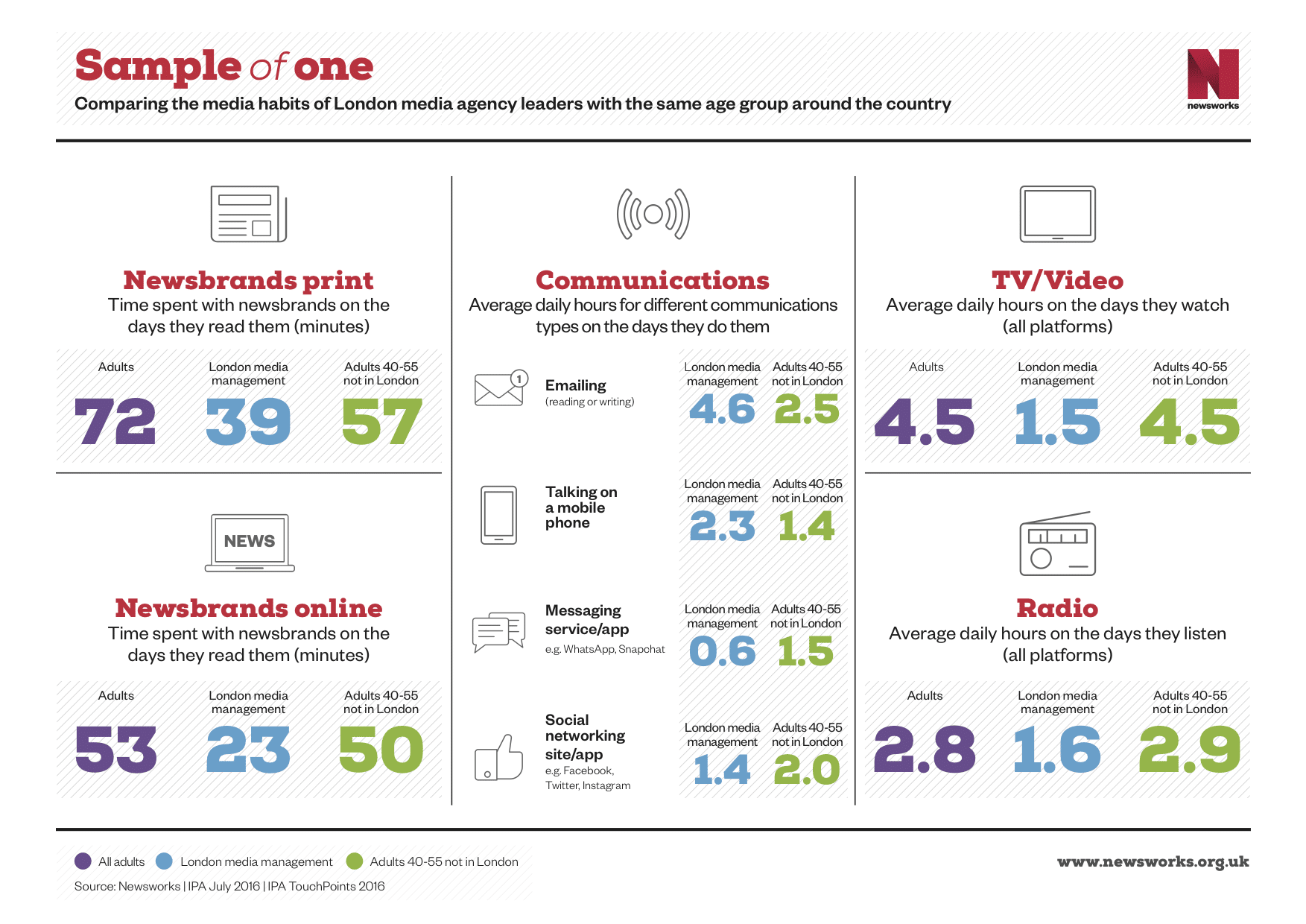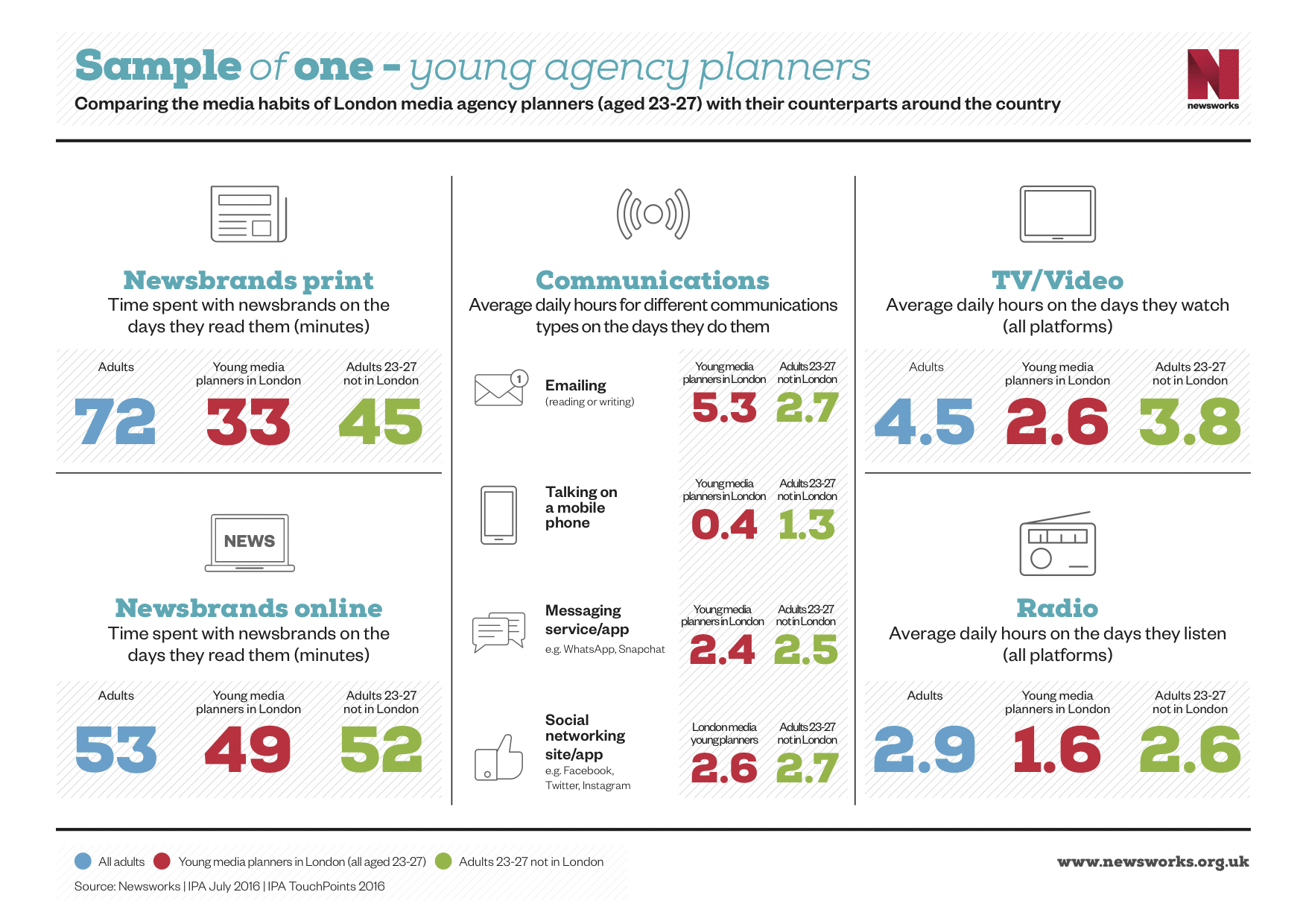Study into people’s media habits
Using TouchPoints data as a comparative norm, this study of people’s media habits in the communications industry shows how they differ from the general population.
One of the skills of media planning is to be able to put yourself in other people’s shoes, to be able to devise and implement a strategy targeting people who are not like you, because you’ve used data to generate insights about them, what they do, how they consume media. Yet lately we’ve been hearing lots of discussion about ’filter bubbles’ and ’echo chambers’ where people, media planners included, are increasingly only exposed to people just like them.
This can very easily lead to an assumption in planning that everyone consumes media in just the same way as you. And while sometimes it is good to rely on your gut instinct, we are increasingly in danger of relying on a sample of one – ourselves! Or even worse, actually, on a sample of people just like us.
With this in mind, Newsworks embarked on an experiment, supported by the IPA and RealityMine. We asked 25 young media agency planners – mainly 23 to 27 year olds, plus four agency leaders – to keep a TouchPoints diary (including having the passive app on their smartphones) for a week in early July 2016. We then used the latest TouchPoints 2016 data to compare their media consumption with their age counterparts around the country.
Results
When it comes to the millennial cohort, we found that our young planners watched over an hour less of TV content a day, spent less time with newspapers in print and online, watched three times more Netflix and spent almost twice as much time on email as their age group in the rest of the UK.
Just four titles made it onto the list of newspapers they read in print: Metro, i, the Evening Standard and the Guardian. Digitally, MailOnline and the FT joined the roster. By comparison, young people in the rest of the country consume a share of 13 titles in print and 10 online.
A similar story played out with the agency leaders. They spent three hours less a day in front of the box compared to 40-55 year olds outside of London, over an hour less listening to the radio, 18 minutes less with print newspapers and 27 minutes less consuming newsbrands’ content online.
Denise Turner, insight director at Newsworks, said: “This experiment has been incredibly revealing, demonstrating very clearly that the media habits of London media people are not representative of the norm. It has enabled us to have more meaningful conversations with planners about the role of newsbrands in people’s lives today.
Moreover, it has served to highlight even further the importance of industry surveys like IPA’s TouchPoints in understanding media consumption today.”



